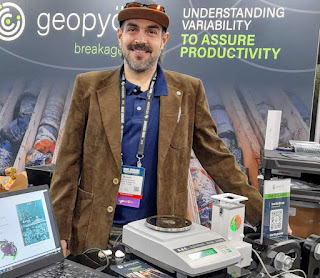We are looking forward to being back at the Vineyard Hotel in Cape Town next April for Comminution '23, and it's great to have the support of so many companies already.
There is now a call for abstracts for the conference. Abstracts should be submitted online no later than October 31st. If accepted, you will be required to submit a draft paper of your presentation, which will be issued to conference delegates on a USB as a conference Proceedings.
After the conference you will be invited to submit a final paper for peer-review. If accepted it will be published in Minerals Engineering journal, and included in ScienceDirect in the virtual special issue of the conference.
MEI's previous comminution conference in Cape Town was Comminution '18. Comminution '20 was postponed for a year due to the pandemic, and had to be held online, as Comminution '21, last year. We are delighted to hear that papers resulting from presentations at Comminution '21 have received awards from our Industry Advocate, the Coalition for Eco-Efficient Comminution (CEEC), which recognises outstanding published research and field work that contributes to making mineral processing more eco-efficient. For the past decade the global not-for-profit organisation has been championing greater sustainability in mining, with a strong focus on communicating knowledge, technology and approaches that reduce energy usage in the high-intensity breaking, crushing and grinding processes.
The 2021 CEEC Medal for Technical Research was awarded to the authors of the paper The Double Wheel Breakage Test. This was presented at Comminution '21 by Marcos Bueno and was published in Minerals Engineering, Volume 168, July 2021. The authors collaborated from across the world, comprising Finland’s Marcos Bueno of Geopyörä, the University of Oulu’s Janne Torvela and Toni Liedes and Tábatha Chávez Matus of Oulu Mining School; Rajiv Chandramohan from Ausenco, Canada and Malcolm Powell of Julius Kruttschnitt Mineral Research Centre, The University of Queensland, Australia.
 |
| Marcos Bueno |
The CEEC Medal Evaluation Panel also awarded two High Commendations. The 2021 CEEC Medal High Commendation for Technical Research was awarded to "SAG mill energy and wear insights derived from measuring inside the mill", authored by Dr Paul Shelley, a regular contributor to MEI's comminution series, and Eugene Davies from Molycop Global, Jacques Olivier, Western Australian School of Mines, Curtin University and Mark Atta Danso, Westgold Resources, Australia. This paper was presented at Comminution ’21 and is the second year running that Dr Shelley’s research on SAG mill optimisation has received a High Commendation in this category. The judges noted: “It is good to see work progressing on understanding the efficiency gains that can be achieved by understanding what happens inside a mill. By getting real measurements from the heart of the breakage process, the paper shows how researchers, operators and suppliers can systematically investigate methods and materials to improve milling efficiency.
The 2021 CEEC Medal High Commendation for Operations was to "Throughput improvements at the Capstone Pinto Valley Operation", which was a video presentation delivered at Comminution ‘21. The work was authored by Umut Erol and Curtis Wettstein from Capstone Mining Corporation’s Pinto Valley copper mine in Arizona, US, and Adrian Dance of SRK Consulting, Canada. The judging panel said the well-presented, clear and concise presentation provided evidence of how increased fragmentation affected project efficiency and operating costs. “The work outlines how projects can make material value improvements through diligent and well planned work focused on optimising comminution efficiency to improve plant capacity and reduce operating costs,” the judges said.
All the presentations from Comminution '21 are available on demand and we now look forward to catching up with all the presenters face to face in Cape Town in April for Comminution '23.



















































